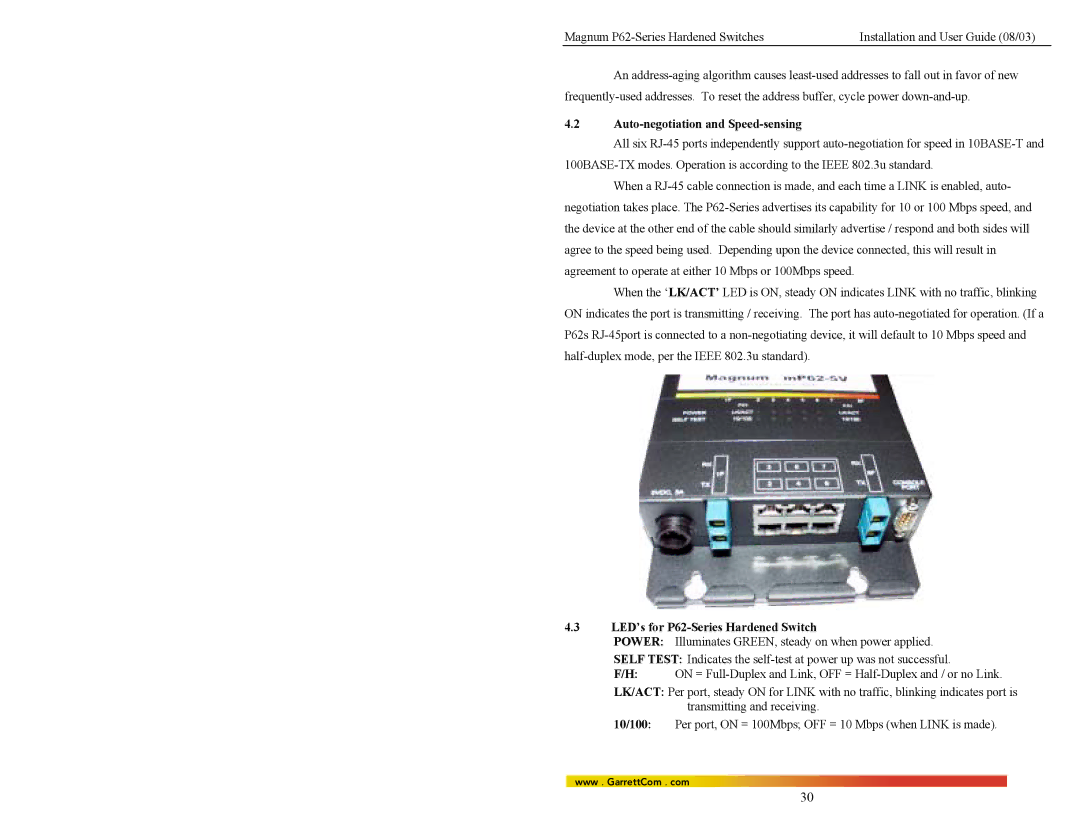An address-aging algorithm causes least-used addresses to fall out in favor of new frequently-used addresses. To reset the address buffer, cycle power down-and-up.
4.2Auto-negotiation and Speed-sensing
All six RJ-45 ports independently support auto-negotiation for speed in 10BASE-T and
100BASE-TX modes. Operation is according to the IEEE 802.3u standard.
When a RJ-45 cable connection is made, and each time a LINK is enabled, auto- negotiation takes place. The P62-Series advertises its capability for 10 or 100 Mbps speed, and the device at the other end of the cable should similarly advertise / respond and both sides will agree to the speed being used. Depending upon the device connected, this will result in agreement to operate at either 10 Mbps or 100Mbps speed.
When the ‘LK/ACT’ LED is ON, steady ON indicates LINK with no traffic, blinking ON indicates the port is transmitting / receiving. The port has auto-negotiated for operation. (If a P62s RJ-45port is connected to a non-negotiating device, it will default to 10 Mbps speed and half-duplex mode, per the IEEE 802.3u standard).
4.3LED’s for P62-Series Hardened Switch
POWER: Illuminates GREEN, steady on when power applied.
SELF TEST: Indicates the self-test at power up was not successful.
F/H: ON = Full-Duplex and Link, OFF = Half-Duplex and / or no Link.
LK/ACT: Per port, steady ON for LINK with no traffic, blinking indicates port is transmitting and receiving.
10/100: Per port, ON = 100Mbps; OFF = 10 Mbps (when LINK is made).
www . GarrettCom . com

